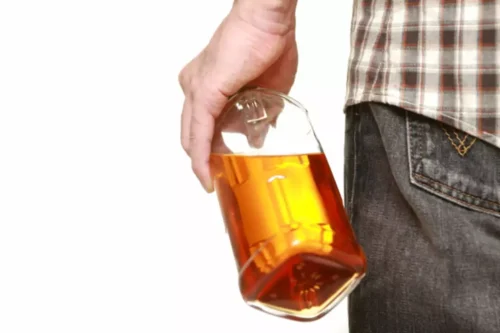
CBT works to identify the specific scenarios or mental states that make someone more likely to relapse. Once identified, clients can proactively develop strategies to avoid these situations or respond more effectively when they arise. CBT teaches individuals to pinpoint specific people, places, emotions, or situations that may prompt substance use. To clarify key terms used in this manuscript, the term substance use is defined as taking any illicit psychoactive substance or improper use Pof any prescribed or over the counter medication. Substance use disorders as used here will refer to substance abuse and substance dependence.
Relapse Prevention Plan Worksheet
- In aggregating effect sizes, the approach taken in the CBT for Insomnia (CBT-I) evaluation (Boness et al., 2020) was maintained, resulting in average (rather than weighted) effect sizes.
- Moreover, studies indicate that patients who engage in CBT not only build essential coping skills, but also experience lasting benefits; skills learned through this approach continue to support their recovery months after treatment.
- However, while medications may provide quicker relief, CBT has shown to offer longer-lasting benefits.
- Behavioral strategies such as contingency management, where positive behaviors are reinforced with rewards like vouchers, enhance motivation and adherence.
Taken together (see Tables 3 and 4), there is moderate quality evidence that CBT produces small to moderate effects on substance use among people with various types of SUDs when compared to inactive treatment. This remains true even when effect sizes from studies considered to have low or critically low quality are considered. There is also some evidence, although from a dated study that is considered to have “critically low” quality, that CBT for SUD may influence psychosocial/functional outcomes. Although there is only moderate quality evidence for the efficacy of CBT in treating SUD, consideration of additional contextual factors such as flexibility in CBT delivery modality and evidence for efficacy across patient populations bolsters the overall recommendation. As such, based on the criteria outlined by Tolin and colleagues (2015), the current status of the literature merits a “strong” recommendation of CBT for SUD (see Table 5).
Marlatt and Gordon posit that one source of possiblerelapse risk has to do with the degree of stress or daily hassles that theclient experiences (Marlatt and Gordon,1985). They suggest that when the demands and obligations aclient feels (“shoulds”) outweigh the pleasures the individual can engage in(“wants”), then his life is out of balance. In response to these feelings, the individualcould begin making decisions that gradually lead toward possible relapse.The goal is to help the individual find a better balance, increasinginvolvement in pleasant and rewarding activities while reducing the leveland sources of stress.
- Originally from the East Coast, Dr. Deena has worked running treatment centers, worked as a therapist in psychiatric hospitals as well as school settings and currently has a thriving private practice in the LA area.
- For a reviewof assessment tools that can be used in developing a functional analysis seeTIP 35, Enhancing Motivation for Change in Substance Abuse Treatment(CSAT, 1999c).
- Triggers — situations that “trigger” cravings throughout the day — keep many addicted people from getting sober.
- CBT therefore identifies, challenges, and aims to change unhelpful thinking patterns and teaches new skills, facilitating emotional and behavioural changes.
- Neurobiological studies reinforce the role of CBT in modulating key brain regions involved in addiction, such as the prefrontal cortex, emphasizing the importance of integrating biological insights with psychological interventions.
- Cognitive Behavioral Therapy (CBT) continues to prove its value in addiction treatment, offering a structured approach that not only addresses immediate concerns with substance use but also equips individuals with long-term coping strategies.
Neuroticism Treatment Guidelines Handout
By addressing both substance abuse and mental health simultaneously, the chances for full recovery are greatly increased. Through CBT, you’ll cbt substance abuse learn to identify and challenge the negative thoughts and beliefs driving your substance abuse. You’ll also develop coping strategies to manage cravings, high-risk situations, and mental health symptoms more effectively. Substance abuse and mental health issues often go hand-in-hand, with one exacerbating the other in a vicious cycle. CBT helps you recognize the thought patterns and behaviors that contribute to your addiction and co-occurring disorders like depression or anxiety.
How does CBT complement pharmacotherapy, support groups, and other therapies?

You’ll break down your problems into separate parts, making them easier to understand and manage. You’ll analyze your behaviors and beliefs with your therapist, and they’ll help you determine which ones are unhelpful and unrealistic and how they affect you. As you work through your problems, your therapist may ask you to keep a journal to track negative or triggering situations and how you respond to them, making it easier to identify problematic thought patterns, beliefs and behaviors in your life. CBT is a popular form of psychotherapy that provides structure to patients and focuses on developing goals. Additionally, CBT identifies a person’s negative thoughts, feelings and beliefs about themselves to change their behaviors.
- Get professional help from an online addiction and mental health counselor from BetterHelp.
- If you plan to treat patients suffering from substance misuse disorders, I have good news and bad news.
- Our admission staff is happy to answer any of your questions about treatment and recovery.
In addition, certain populations, such as pregnant women and incarcerated patients, may present particular challenges. In each of these circumstances, the use of functional analysis to arrive at strong case conceptualization and the flexibile utilization of treatment components is important. For example, among individuals with low levels of literacy, the use of written homework forms may need to be replaced by alternative means of monitoring home practice (e.g., using simplified forms or having the patient call to leave a phone message regarding completion of an assignment). Through the use of problem-solving exercises and the development of a repertoire for emotion regulation, the patient can begin to both determine and utilize non-drug use alternatives to distress. Strategies for coping with negative affect, such as using social supports, engaging in pleasurable activities, and exercise can be introduced and rehearsed in the session.
Cognitive restructuring includes determining your unfavorable ideas and changing them with more well balanced ideas. Scottish Government/NES Psychology routinely funds training programmes in CBT and supervisor training. As CBT is a core therapeutic modality within the NHS and many other settings, access to supervision and implementation support is generally widely available.
Recovery Programs

A therapist aims to reshape your thoughts towards a more positive perspective for better behavioral outcomes. Role-playing offers a safe space for group therapy participants to confront their fears and negative thoughts. Acting in different scenarios can help patients to develop better coping strategies for difficult situations.
Treating Substance Misuse Disorders with CBT

Digital CBT programs, such as CBT4CBT, have shown promising results as both standalone treatments and supplements to traditional care. These programs utilize interactive modules, homework assignments, and real-time feedback to enhance learning and skill acquisition. Evidence indicates that digital CBT improves coping skills and helps manage cravings, making it a practical approach, especially for those unable to attend in-person sessions.
Biopsychosocial Model of Addiction
The effectiveness of this therapy can heavily depend on client engagement and commitment. Furthermore, CBT may not be fully effective for those with more complex mental health issues or learning difficulties, as it typically addresses behavioral patterns without delving deeply into past traumas. Cognitive Behavioral Therapy (CBT) employs a range of techniques to effectively treat addiction. One major strength of CBT is its focus on addressing negative thought patterns that contribute to substance misuse.
A third coder (CB) was responsible for comparing effect sizes and resolving discrepancies. Despite these positive findings, there exists a significant variability in study designs, populations, and treatment protocols. This heterogeneity suggests drug addiction treatment that while CBT is broadly effective, standardization of approaches is lacking, which may influence the consistency and generalizability of results. Consequently, future research should prioritize developing clear, replicable protocols tailored to individual needs, aiming to enhance personalization and efficacy.


